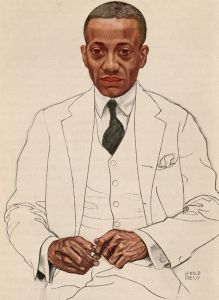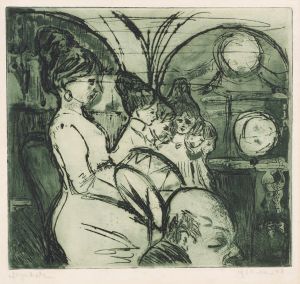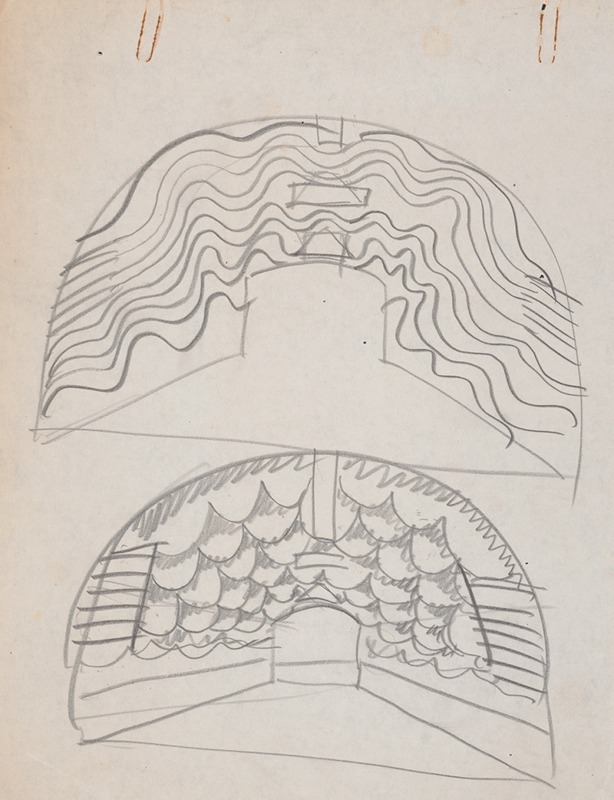
Suggested treatments of Auditorium for Theatre and Concert Hall, New York World’s Fair 1939. Sketch for unlettered scheme, for proscenium
A hand-painted replica of Winold Reiss’s masterpiece Suggested treatments of Auditorium for Theatre and Concert Hall, New York World’s Fair 1939. Sketch for unlettered scheme, for proscenium, meticulously crafted by professional artists to capture the true essence of the original. Each piece is created with museum-quality canvas and rare mineral pigments, carefully painted by experienced artists with delicate brushstrokes and rich, layered colors to perfectly recreate the texture of the original artwork. Unlike machine-printed reproductions, this hand-painted version brings the painting to life, infused with the artist’s emotions and skill in every stroke. Whether for personal collection or home decoration, it instantly elevates the artistic atmosphere of any space.
Winold Reiss, a German-American artist known for his vibrant use of color and innovative design, created the artwork titled "Suggested treatments of Auditorium for Theatre and Concert Hall, New York World’s Fair 1939. Sketch for unlettered scheme, for proscenium." This piece is a part of Reiss's broader body of work that often explored themes of cultural diversity and modernist aesthetics, reflecting his unique approach to art and design during the early 20th century.
Reiss was born in Karlsruhe, Germany, in 1886 and immigrated to the United States in 1913. He brought with him a European sensibility that he combined with American themes, making significant contributions to the American art scene. His work spanned various mediums, including painting, interior design, and graphic arts. Reiss is particularly noted for his portraits of Native Americans and African Americans, as well as his contributions to the Harlem Renaissance.
The 1939 New York World's Fair, where this sketch was intended to be featured, was a significant cultural event that showcased technological innovation and artistic expression. The fair's theme, "The World of Tomorrow," aimed to present a vision of the future, emphasizing progress and modernity. It provided a platform for artists and designers to present their ideas on a global stage.
Reiss's sketch for the auditorium's proscenium at the fair reflects his modernist style and his ability to integrate art with architecture. The proscenium, the part of a theater stage in front of the curtain, is a critical element in theater design, framing the stage and enhancing the audience's viewing experience. Although specific details about the sketch's content are limited, it likely incorporated Reiss's characteristic bold colors and geometric patterns, aligning with the modernist aesthetic prevalent at the time.
Reiss's involvement in the World's Fair highlights his role as a prominent figure in the American art and design community. His work during this period often intersected with public and commercial projects, allowing him to reach a broader audience. The fair itself was a melting pot of ideas and cultures, and Reiss's contributions would have been part of a larger dialogue about art's role in society and its potential to shape public spaces.
While detailed information about this specific sketch is scarce, it is clear that Reiss's artistic vision was in harmony with the fair's forward-looking ethos. His ability to blend artistic creativity with functional design made him a valuable contributor to projects like the World's Fair, where art and innovation were celebrated.
Reiss continued to influence American art and design until his death in 1953. His legacy is preserved through his diverse body of work, which continues to be studied and appreciated for its cultural significance and artistic innovation.





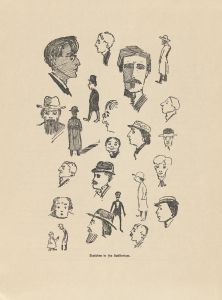
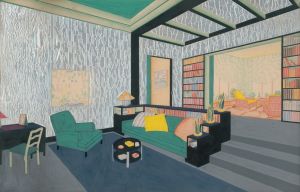
![Designs and photographs for alterations to St. James Bar Restaurant, W. 181 St. and New York, NY.] [Study of exterior elevation](/imgs/249306/s/winold-reiss-designs-and-photographs-for-alterations-to-st-james-bar-restaurant-w-181-st-and-new-york-ny-study-of-exterior-elevation-c23a0b8e.jpg)

![Interior perspective studies for Restaurant Crillon, 15 East 48th Street, New York, NY.] [Study for Winter Garden](/imgs/249379/s/winold-reiss-interior-perspective-studies-for-restaurant-crillon-15-east-48th-street-new-york-ny-study-for-winter-garden-60e13bd3.jpg)
![Design proposals for Puck Theater, New York, NY.] [Interior perspective study.](/imgs/249414/s/winold-reiss-design-proposals-for-puck-theater-new-york-ny-interior-perspective-study-ba0eb061.jpg)
![Designs for theater with black-framed proscenium and boldly colored settings.] [Study for stage light wall decoration, possibly for Caf ̌Crillon ……](/imgs/249421/s/winold-reiss-designs-for-theater-with-blackframed-proscenium-and-boldly-colored-settings-study-for-stage-light-wall-decoration-possibly-for-caf-crillon--2b2d7011.jpg)
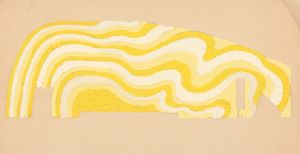
![Suggested treatments of Auditorium for Theatre and Concert Hall, New York World’s Fair 1939.] [Sketch for Scheme A](/imgs/249446/s/winold-reiss-suggested-treatments-of-auditorium-for-theatre-and-concert-hall-new-york-worlds-fair-1939-sketch-for-scheme-a-e530668f.jpg)
![Suggested treatments of Auditorium for Theatre and Concert Hall, New York World’s Fair 1939.] [Sketch for Scheme A](/imgs/249447/s/winold-reiss-suggested-treatments-of-auditorium-for-theatre-and-concert-hall-new-york-worlds-fair-1939-sketch-for-scheme-a-32d2e6d7.jpg)
